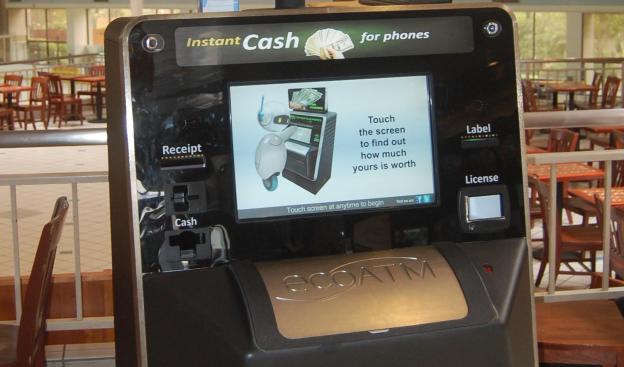
Shown off at the Consumer Electronics Show, the EcoATM is a stand-alone computerized kiosk that accepts old electronics like previous versions of the iPhone and offers cash in exchange. After taking a smartphone out of a case and attaching a QR code sticker to the rear of the device, the user places the old technology into the machine. The EcoATM scans the device and determines what type of electronics is sitting in the tray. It also scans for cracks, scratches and other blemishes that would likely reduce the value of the smartphone if sold on a service like eBay. The EcoATM generates a rough estimate of the value of the device and asks the user if they would like to continue.

While someone trading in their smartphone would likely make more money selling the device on eBay, the convenience of using the kiosk is targeted at people that may be unfamiliar with eBay auctions or simply don’t have the time for that process. EcoATM makes money off reselling the devices in good shape through online auctions as well as breaking down broken electronics into mineral form to sell. EcoATM currently has about 50 kiosks mostly available in southern California, but hopes to expand eastward with a total of 500 kiosks by the end of 2012.


